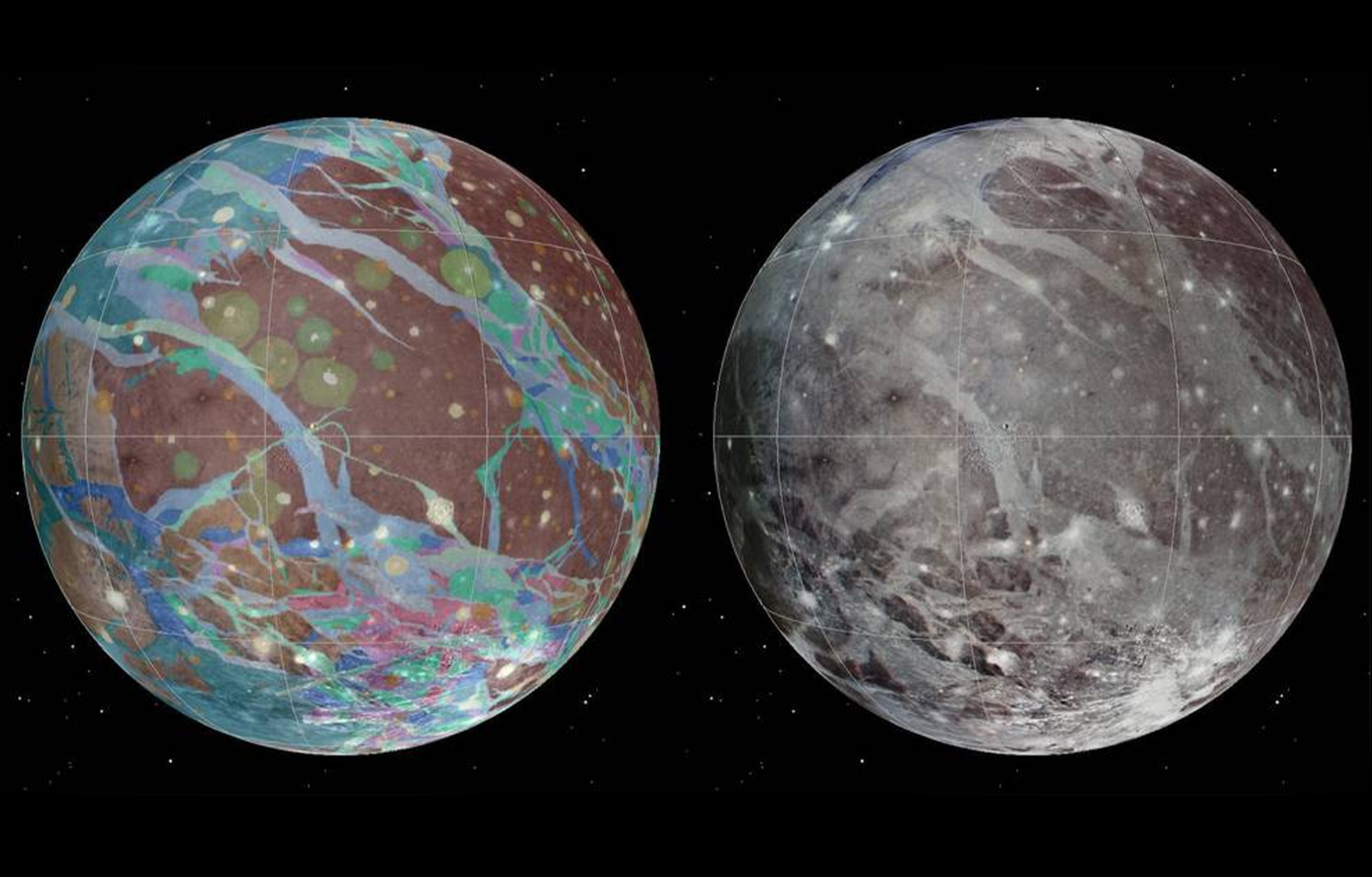New observations of the Jovian moon Ganymede have uncovered further evidence that subsurface oceans could exist on the large moon. The detection was made during a flyby of Ganymede that Juno made in July of 2021 when it analyzed the moon using the probe’s Jovian Infrared Auroral Mapper (JIRAM) spectrometer.
These observations further increase the evidence pool scientists have gathered, suggesting a salty subsurface ocean can be found on the Jovian moon. The probe passed close to the moon and detected hydrated sodium chloride, ammonium chloride, sodium bicarbonate, and possibly even more organic compounds like aliphatic aldehydes, a new paper has revealed.
The paper, which is published in the journal Nature Astronomy, takes a closer look at the observations to see just the surface of the moon could form. According to the researchers, the presence of these organics on the surface could point toward the presence of hydrothermal activity deep within the moon.

Extensive water-rock interactions could cause this activity, the authors explain in their paper, and it would be “consistent with the presence of sodium salts as an independent indicator of aqueous alteration” inside of the moon. However, it is also possible that something else has caused these organics to appear on the surface of Ganymede.
Instead of subsurface oceans on the Jovian moon, Ganymede could show evidence of these organics due to other processes happening on the surface, thus removing the need for a salty inner ocean to cause it. The main reason behind this possibility is because of how thick Ganymede’s crust is.
“Because Ganymede has a substantially thicker crust than Europa, exchanges between its deeper interior and surface may not be responsible for its surface composition, and thus may reflect exchange between the shallow crust and surface, or exogenous deposition,” the researchers wrote in their study.
Whether or not the subsurface oceans exist on Ganymede is something we’ll have to prove another way. But, the evidence of organics on the surface of the Jovian moon is still exciting, and more proof of why probes like Juno are needed to explore the planets within our solar system.








